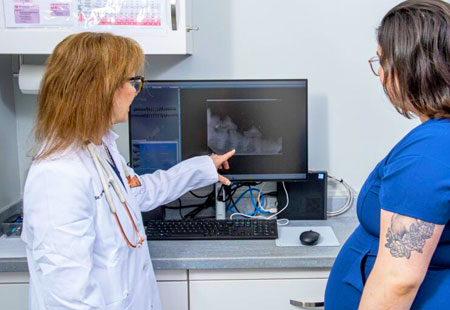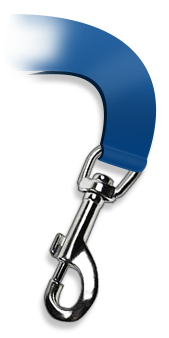

Veterinary Diagnostic Services
Pet Diagnostic Services
Digital Radiology

Radiographs, or X-rays, are one of the most common and useful diagnostic tools in medicine. At Countyline Veterinary Hospital, we use X-rays to examine your pet's bones, lungs, heart, abdomen, oral cavity and other areas and for diagnosing and monitoring many medical and surgical conditions. If we suspect your pet has a fractured bone, has swallowed a foreign object, or is suffering from a heart problem, an X-ray can tell us what we need to know.
To provide you with the highest quality veterinary care for your pet, County Line Veterinary Hospital has invested in a state-of-the-art digital X-ray machine. There are many important advantages to digital X-rays:
- They are immediately able to be viewed on a computer monitor.
- The clear, detailed images can be manipulated to get a better view of your pet's bones and internal organs, leading to a faster and more accurate diagnosis.
- They take less time to process, which means less time for your pet on the X-ray table (and less stress), and less waiting time for you.
- No harsh chemicals are needed to develop the images, reducing potential harm to our staff and the environment.
- If a second opinion is necessary, digital X-rays can be sent by email to a specialist.
Advanced diagnostic capabilities are an extremely important part of veterinary medicine, in part because we can't simply ask our patients what is wrong. An investment in digital X-ray technology reflects the hospital's commitment to offer you and your pet the best, most comprehensive healthcare available.

Ultrasound
Ultrasound is a pain-free, totally non-invasive technique that uses high-frequency sound waves to produce a real-time image of your pet's internal organs. Often considered more exact than radiology, ultrasound provides a movie of what is happening inside your pet's body. It is particularly useful in viewing your pet's abdominal organs, including the spleen, kidneys, liver and gallbladder. It can also be used to evaluate heart functions, bladder scans and other areas such as the thyroid glands, testicles and mammary glands.
Ultrasound works well in conjunction with other diagnostic tools and a wide range of diagnostic procedures. For example, if an X-ray shows a lesion on your pet, an ultrasound can determine the origin of the lesion and whether it has spread elsewhere. Using the ultrasound image as a guide, surgical biopsies can be obtained without major surgery and your pet can often go home the same day. Ultrasound procedures are typically not stressful for your pet and take anywhere from 30 to 60 minutes to perform.
County Line Veterinary Hospital works with Certified Internal Medicine Specialist Dr. Johanna Frank of Sound Technologies to provide patients with a full-range of ultrasound procedures.

Laboratory
In order to administer the best preventive medicine and to diagnose internal health issues, the veterinarians at County Line Veterinary Hospital require a wide range of laboratory tests using a patient's blood, urine, feces and biopsied tissue. Without timely access to precise laboratory test results, it is difficult to make an accurate diagnosis or assessment of your pet's health.
County Line Veterinary Hospital maintains a complete in-house laboratory to provide timely access to tests such as full blood and chemistry panels, cytologies, fungal cultures, urinalysis, fecal tests, heartworm testing and more.
Echocardiogram
Echocardiograms are specialized ultrasound images of the heart that are far more precise than electrocardiographs. An echocardiogram creates a two-dimensional real-time video image of the cardiovascular system that displays the function of the valves in the heart, the contractions of the heart and blood flow through the arteries.
County Line Veterinary Hospital works with a local cardiologist to provide this important service to you and your pet.



